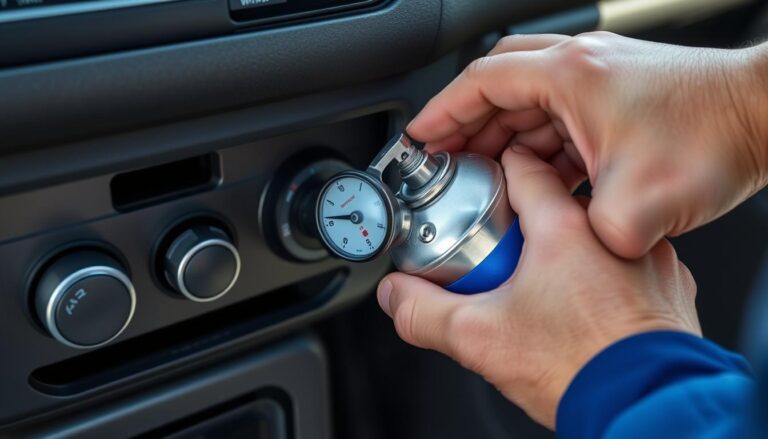For new drivers, the confusion between pedals can be not just embarrassing but potentially dangerous. Understanding the gas pedal position is fundamental to safe driving, yet this seemingly simple question causes anxiety for many first-time drivers. With different vehicle configurations worldwide and the stress of learning to drive, knowing exactly where each pedal is located becomes crucial for preventing accidents and building proper muscle memory.
The Standard Gas Pedal Position: Right Side
The gas pedal is always positioned on the right-hand side of the driver, regardless of whether you’re in a left-hand or right-hand drive vehicle. This standardization exists across virtually all passenger vehicles worldwide, from compact cars to large trucks.
In vehicles with manual transmission, the pedal arrangement from left to right is:
- Clutch pedal – leftmost position (only in manual transmission vehicles)
- Brake pedal – center position
- Gas pedal (accelerator) – rightmost position
In automatic transmission vehicles, which are increasingly common, you’ll find only two pedals:
- Brake pedal – left position
- Gas pedal (accelerator) – right position
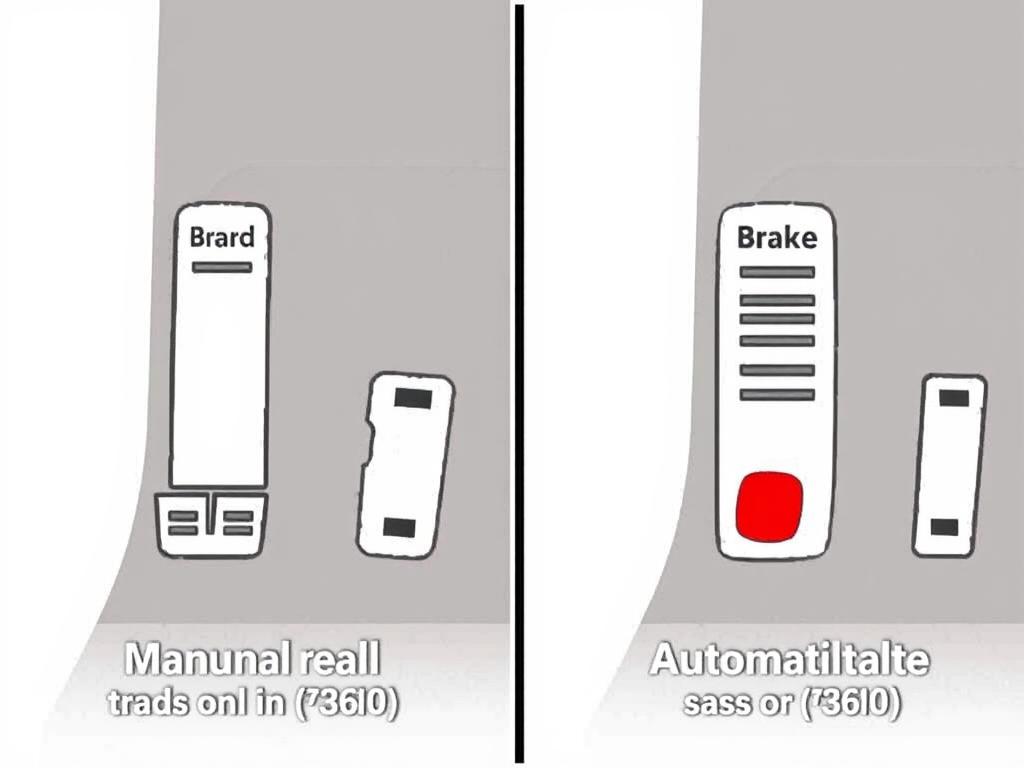
Why Gas Pedal Position Became Standardized
The standardization of the gas pedal position on the right side wasn’t arbitrary. Several factors contributed to this universal configuration:
Historical Development
Early automobiles in the late 19th and early 20th centuries experimented with various pedal arrangements. By the 1910s, as mass production began, manufacturers recognized the need for standardization. The Ford Model T initially used a different configuration, but by the 1920s, the right-side gas pedal became the accepted standard.
This standardization coincided with the increasing popularity of right-foot acceleration, which allowed for smoother control while keeping the left foot available for the clutch in manual transmission vehicles.
Safety Considerations
The right-side gas pedal position offers several safety advantages. Most people have better fine motor control with their right foot, allowing for more precise acceleration. Additionally, separating the acceleration and braking functions between different feet (in manual transmissions) reduces the risk of pressing both pedals simultaneously.
Research has shown that consistent pedal placement across different vehicles reduces driver error, especially in emergency situations where muscle memory becomes critical.
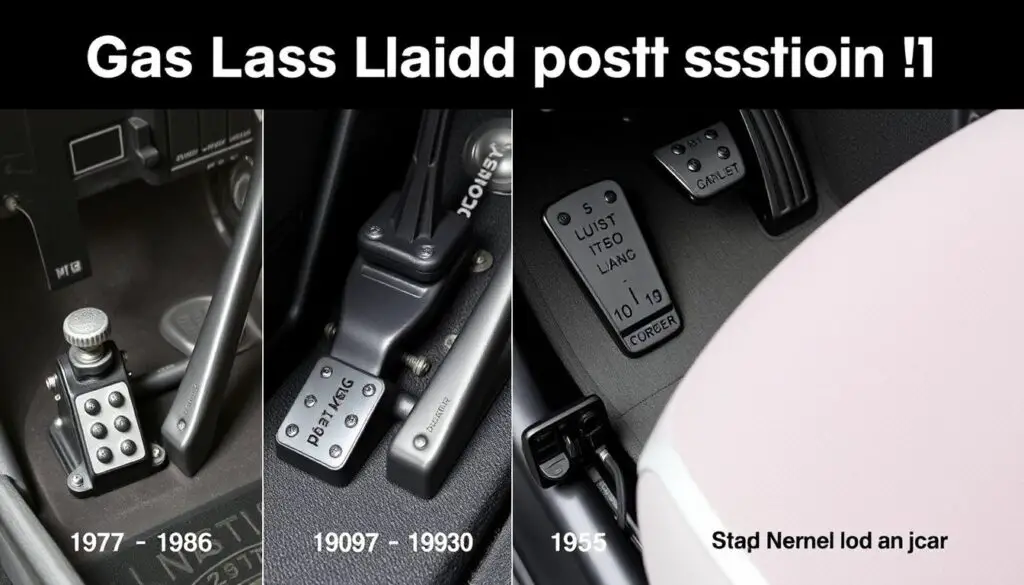
Exceptions and Special Cases
While the standard gas pedal position is consistent across most vehicles, there are some notable exceptions and special cases worth understanding:
Right-Hand Drive Vehicles
In countries like the UK, Japan, Australia, and India, vehicles are designed with the steering wheel on the right side of the car. However, even in these right-hand drive vehicles, the gas pedal remains on the right side of the pedal cluster. The fundamental arrangement doesn’t change – only the driver’s position within the vehicle does.
Modified Vehicles for Disabled Drivers
Vehicles can be adapted for drivers with physical disabilities using hand controls or modified pedal arrangements. These adaptations might include hand-operated acceleration and braking systems, left-foot accelerator conversions, or pedal extensions. These modifications are customized to the specific needs of the driver.
Rare Custom Configurations
Some specialized vehicles, particularly in racing or heavy machinery, might feature unconventional pedal arrangements. Certain vintage cars also had non-standard configurations before industry standardization. However, these are exceptions rather than the rule in everyday driving situations.
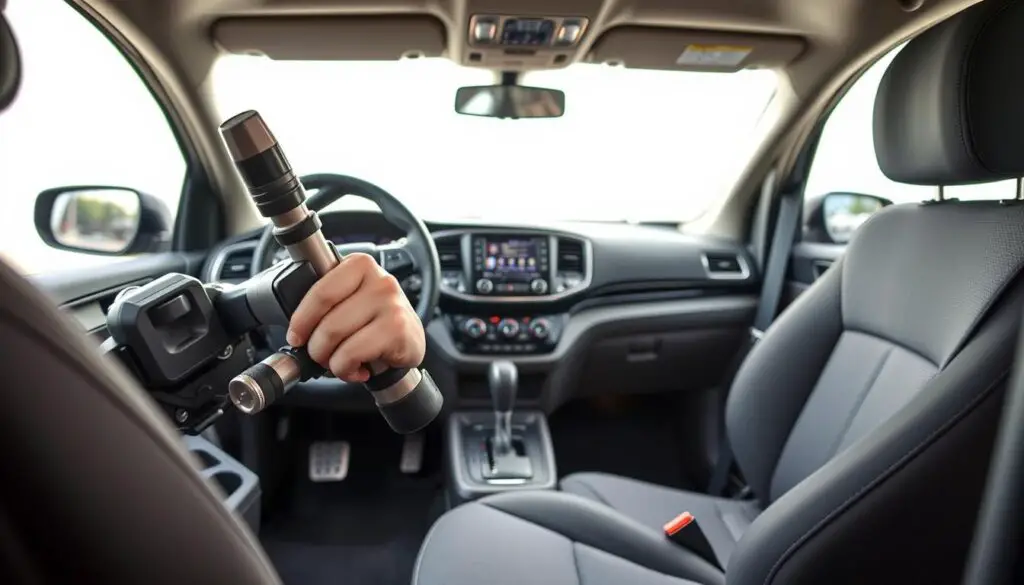
Practical Tips for Different Vehicle Configurations
Whether you’re renting a car abroad or switching between different types of vehicles, these practical tips will help you adapt to various pedal configurations:
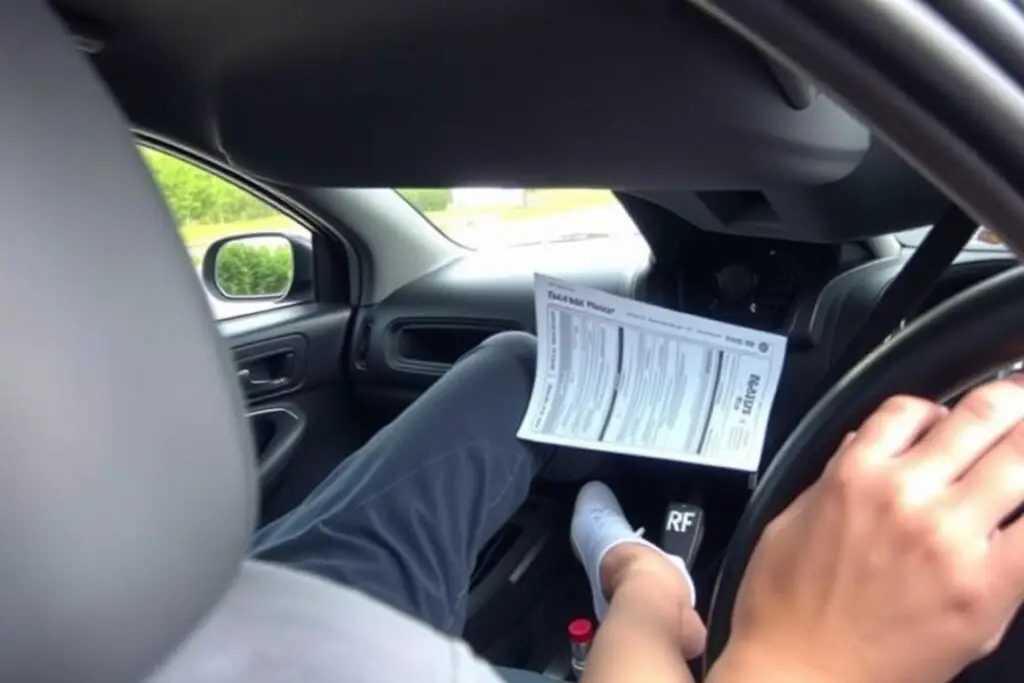
Driving Abroad
- When renting a car in a country with opposite-side driving, remember that while the steering wheel position changes, the pedal arrangement remains the same (gas on right).
- Take time to adjust your mirrors and seating position before driving to ensure proper pedal access.
- Practice in a parking lot or quiet area before entering traffic to build comfort with the new configuration.
- Be extra cautious at intersections and roundabouts, where directional changes can be most confusing.
Switching Between Transmission Types
- When transitioning from automatic to manual, remember your left foot is now needed for the clutch, not the brake.
- When moving from manual to automatic, consciously rest your left foot on the floor rest to avoid accidentally pressing where the clutch would be.
- Practice smooth acceleration in parking lots when switching transmission types to get a feel for the different responsiveness.
- Be mindful that automatic transmissions often have different braking characteristics than manual vehicles.
Before Driving Any Unfamiliar Vehicle:
- Sit in the parked vehicle with the engine off
- Locate and identify each pedal
- Practice moving your foot between pedals
- Adjust the seat for optimal pedal reach
- Start the engine and test pedal resistance in a safe area
Avoiding Pedal Confusion and Common Mistakes
Pedal confusion can lead to serious accidents, especially in high-stress situations. According to the National Highway Traffic Safety Administration (NHTSA), pedal error accidents account for approximately 16,000 crashes annually in the United States alone. Here’s how to avoid becoming part of these statistics:
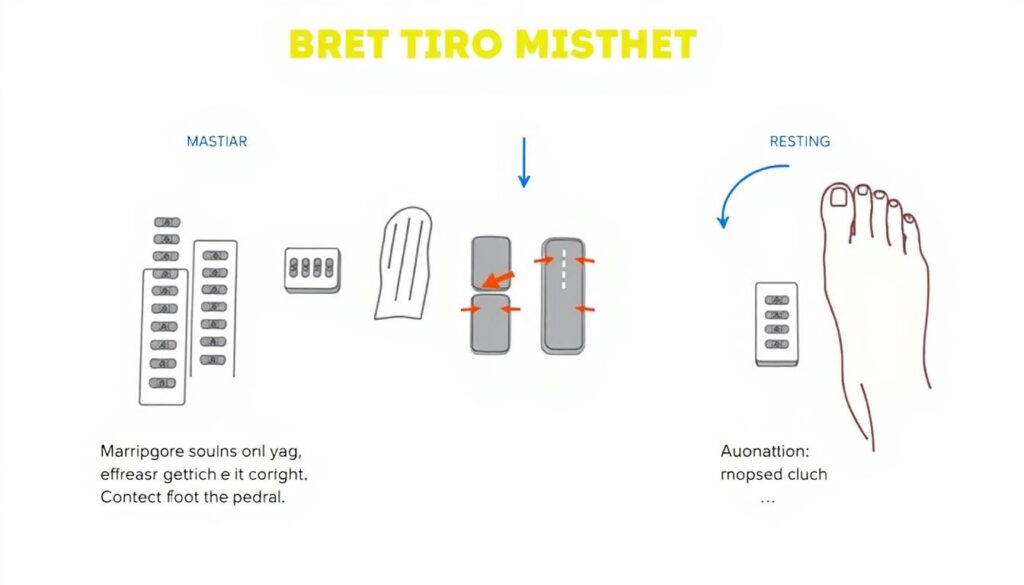
Correct Techniques
- Use only your right foot for both accelerator and brake in automatic vehicles
- Keep your heel on the floor and pivot between pedals
- Wear appropriate driving shoes with thin, flat soles
- Position your seat so you can fully depress pedals without stretching
- Look at the pedals before starting the vehicle if you’re in an unfamiliar car
Dangerous Habits to Avoid
- Using both feet in an automatic transmission (one for gas, one for brake)
- Wearing thick-soled shoes, high heels, or flip-flops while driving
- Resting your foot on the brake pedal while driving (“riding the brake”)
- Pressing both pedals simultaneously in panic situations
- Rushing into driving without familiarizing yourself with the vehicle
Emergency Situation Tip
If you find yourself confused about which pedal is which during an emergency, the safest action is to completely remove your foot from all pedals, then deliberately place it on the brake (middle or left pedal). This momentary pause can prevent accidentally accelerating when you intended to stop.
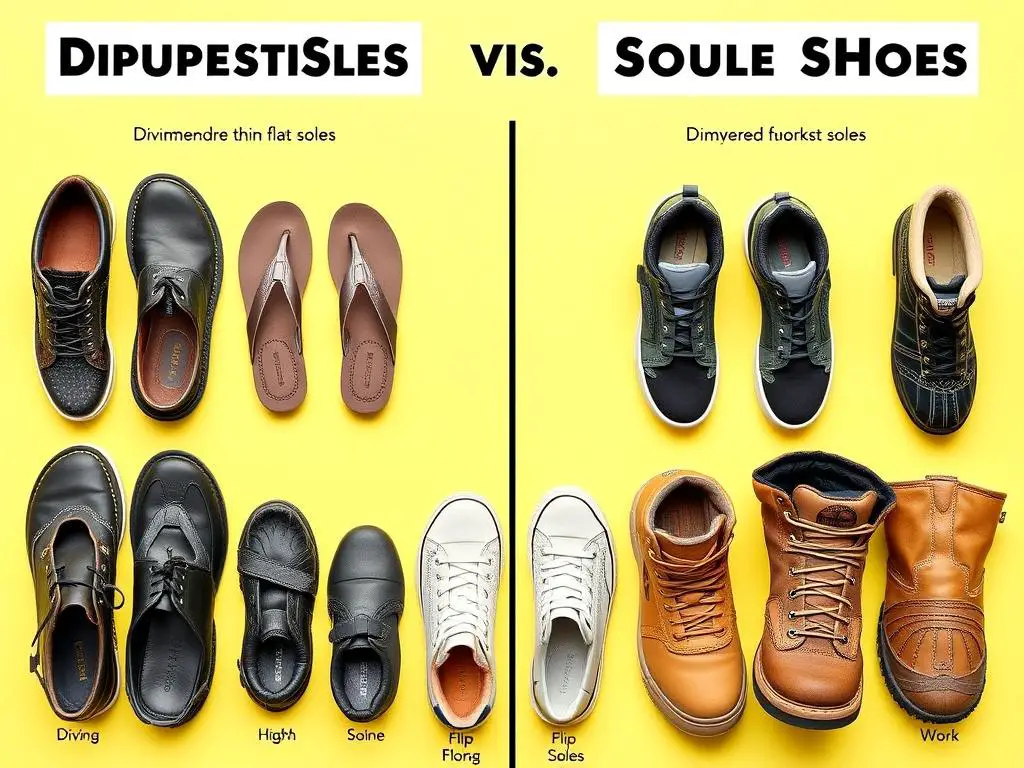
Motorcycle Throttle Controls: A Comparison
Unlike cars, motorcycles use a completely different system for acceleration control. Understanding these differences can be helpful, especially for those who operate both types of vehicles:
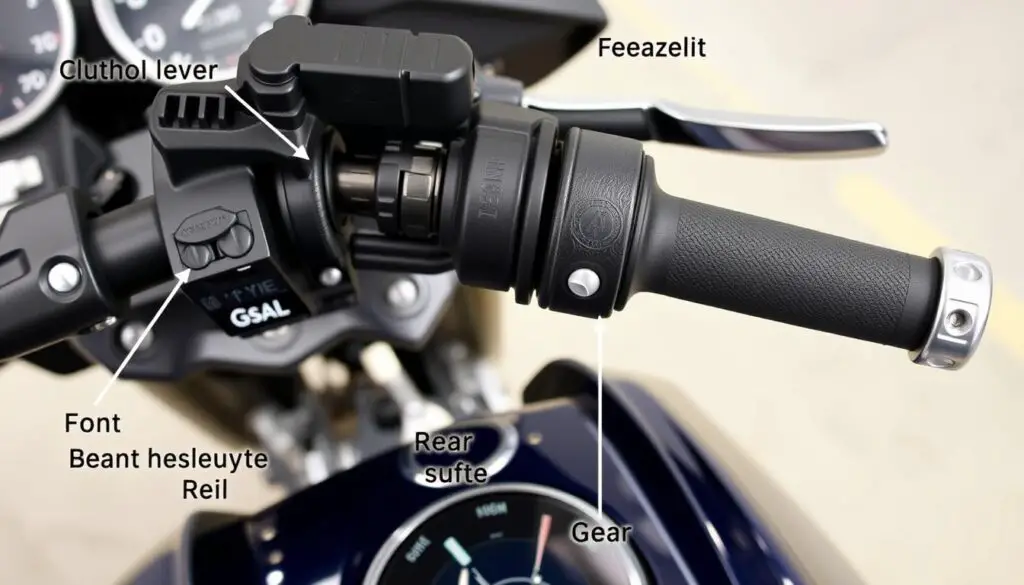
| Control Feature | Automobile | Motorcycle |
| Acceleration | Right foot pedal | Right hand twist throttle |
| Primary Brake | Left or middle foot pedal | Right hand lever (front) and right foot pedal (rear) |
| Clutch (if manual) | Left foot pedal | Left hand lever |
| Gear Shifting | Hand shifter (stick or paddle) | Left foot pedal |
| Control Coordination | Primarily foot-operated | Combination of hand and foot controls |
The fundamental difference is that motorcycles distribute control functions between both hands and feet, while cars primarily use foot controls for acceleration and braking. This requires different muscle memory and coordination skills, which is why switching between vehicles requires a conscious adjustment period.
Safety Recommendations and Conclusion

Understanding the gas pedal position is more than just basic knowledge—it’s a fundamental safety skill. The standardization of pedal positions across vehicles worldwide helps drivers develop consistent muscle memory, reducing the risk of errors in critical situations.
Important Safety Reminders
- Always familiarize yourself with any new vehicle before driving
- Never drive with both feet in an automatic transmission vehicle
- Consider professional driving lessons when learning to drive or switching to a different transmission type
- If you experience any unusual pedal behavior, have your vehicle inspected immediately
- Be especially cautious in high-stress situations where muscle memory becomes critical
According to the Insurance Institute for Highway Safety, proper pedal operation and awareness can significantly reduce the approximately 20,000 pedal misapplication crashes that occur annually. Many of these accidents happen in parking lots or driveways where drivers are maneuvering at low speeds but can still cause significant damage or injury.
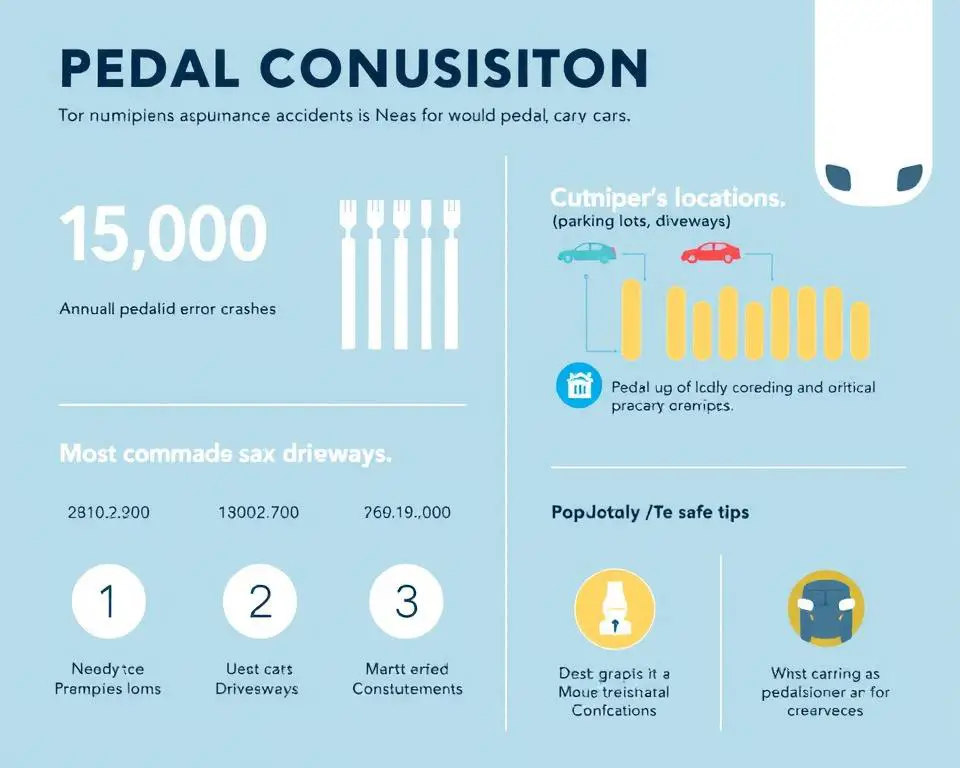
Master Safe Driving Techniques
Ready to become a safer, more confident driver? Our comprehensive safe driving guide covers everything from proper pedal techniques to emergency maneuvers. Download it today to enhance your driving skills and keep yourself and others safe on the road.
Remember, whether you’re a new driver or an experienced one switching between different vehicles, taking a moment to familiarize yourself with the pedal configuration can make all the difference in maintaining control and ensuring safety on the road.
Frequently Asked Questions
Is it ever acceptable to use both feet when driving an automatic transmission?
No, using both feet in an automatic transmission vehicle (left foot for brake, right foot for gas) is generally discouraged by driving experts and safety organizations. This technique increases the risk of accidentally pressing both pedals simultaneously or “riding the brake,” which can cause brake wear, confuse drivers behind you with unnecessary brake lights, and create dangerous situations in emergencies when precise pedal control is critical.
Why is the gas pedal smaller and often positioned lower than the brake pedal?
The gas pedal is intentionally designed to be smaller and positioned slightly lower than the brake pedal for several safety reasons. The smaller size requires more precise foot placement, reducing accidental activation. The lower position means your foot must be deliberately lifted and repositioned to move from the gas to the brake, creating a distinct physical action that helps prevent confusion in emergency situations.
How long does it typically take to adjust to different pedal configurations?
Most drivers adapt to different pedal configurations within 15-30 minutes of focused practice. However, building reliable muscle memory can take several days of regular driving. When switching between manual and automatic transmissions or adapting to right-hand drive vehicles, allow extra practice time in safe environments before attempting challenging driving conditions like heavy traffic or highway driving.
Are there any vehicles where the gas pedal isn’t on the right?
In standard production vehicles, the gas pedal is universally positioned on the right side of the pedal cluster, regardless of whether the vehicle is left-hand or right-hand drive. The only exceptions are specially modified vehicles for drivers with specific disabilities that might require custom pedal arrangements, or extremely rare vintage vehicles produced before standardization became widespread in the automotive industry.
